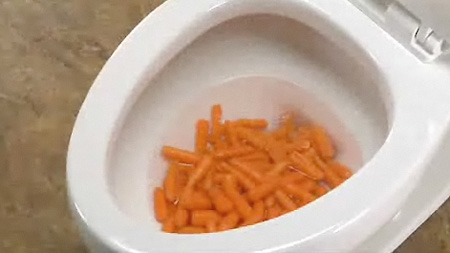Just about everyone will have their unique conception when it comes to Is it safe to flush food (especially rice) down the toilet?.

Intro
Many individuals are often faced with the problem of what to do with food waste, specifically when it comes to leftovers or scraps. One usual concern that occurs is whether it's all right to flush food down the toilet. In this article, we'll delve into the reasons that individuals may consider purging food, the consequences of doing so, and alternate approaches for correct disposal.
Reasons people may consider purging food
Lack of understanding
Some individuals might not be aware of the possible injury caused by flushing food down the toilet. They may wrongly think that it's a harmless method.
Ease
Flushing food down the bathroom might feel like a fast and simple solution to taking care of unwanted scraps, particularly when there's no neighboring trash can readily available.
Idleness
In many cases, individuals might merely pick to flush food out of large laziness, without considering the repercussions of their actions.
Effects of flushing food down the commode
Ecological effect
Food waste that winds up in waterways can add to air pollution and damage marine ecological communities. Additionally, the water used to flush food can strain water sources.
Pipes concerns
Purging food can result in blocked pipes and drains, causing costly pipes repair services and aggravations.
Types of food that must not be flushed
Coarse foods
Foods with coarse structures such as celery or corn husks can get tangled in pipelines and create blockages.
Starchy foods
Starchy foods like pasta and rice can absorb water and swell, leading to clogs in pipelines.
Oils and fats
Greasy foods like bacon or food preparation oils must never be purged down the bathroom as they can solidify and cause blockages.
Correct disposal methods for food waste
Utilizing a garbage disposal
For homes outfitted with waste disposal unit, food scraps can be ground up and flushed with the pipes system. Nonetheless, not all foods appropriate for disposal in this fashion.
Recycling
Specific food packaging products can be recycled, decreasing waste and minimizing environmental influence.
Composting
Composting is a green means to get rid of food waste. Organic materials can be composted and utilized to enrich soil for gardening.
The value of proper waste monitoring
Decreasing ecological damage
Appropriate waste administration techniques, such as composting and recycling, help decrease pollution and maintain natural deposits for future generations.
Protecting plumbing systems
By staying clear of the technique of flushing food down the bathroom, house owners can stop expensive pipes repair services and preserve the honesty of their pipes systems.
Conclusion
Finally, while it might be appealing to flush food down the bathroom for ease, it is essential to comprehend the prospective repercussions of this action. By embracing correct waste administration methods and getting rid of food waste sensibly, people can add to healthier plumbing systems and a cleaner setting for all.
FLUSH FOOD DOWN THE TOILET?
FLUSHING FOOD CAN CAUSE BLOCKED DRAINS IN YOUR HOME
All of the plumbing fixtures in your home are connected to the same sewer pipe outside of your home. This outdoor sewer pipe is responsible for transporting all the wastewater from your home to the Council sewer mains. Even small pieces of food that go down the kitchen sink can cause problems for your sewer. It should therefore be obvious that flushing larger bits of food, such as meat, risks a clog in either the toilet itself or the sewer pipes. Flushing greasy food is even more problematic because oil coagulates when it cools, coating the interior lining of your pipes.
THE TOILET IS NOT A BIN
Food isn’t the only thing that people shouldn’t be flushing down the toilet. People use the toilet to dispose of all kinds of things such as tampons, makeup wipes, dental floss, kitty litter and even underwear. Water goes to great lengths to educate residents about the high costs and stress placed on wastewater treatment systems simply from people flushing the wrong stuff down the toilet. It costs taxpayers millions of dollars each year, and homeowners thousands in blocked drain repairs.
FLUSHING FOOD IS A WASTE OF WATER
Flushing food is a waste of our most precious resource - water. In June this year Level 1 water restrictions were introduced to protect water supply from drought conditions. Much of New South Wales continues to be affected by prolonged drought with recent figures revealing up to 97 per cent of the state remains in drought. Depending on whether you have a single or dual flush toilet, every single flush uses between five and 11 litres of water. In the current climate this is a huge amount of water to be wasting on flushing food that should be placed in the bin (or better yet, the compost).
https://www.jabplumbingsolutions.com.au/blog/can-you-flush-food-down-the-toilet

I hope you liked our excerpt on What Can Happen If You Flush Food Down the Toilet?. Thanks for spending some time to read through our content. Make sure you set aside a second to distribute this article if you appreciated it. Thanks for being here. Don't hesitate to stop by our blog back soon.
Click Here
Comments on “Is it Suitable to Dispose of Food Down the Toilet?”